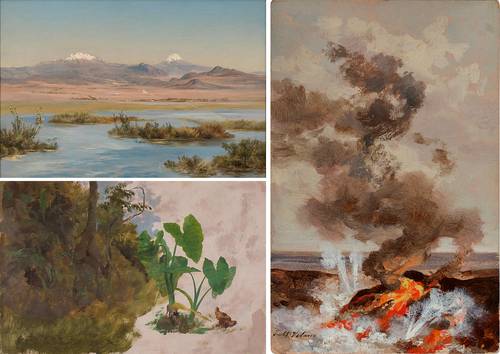The Popocatépetl and the Iztaccíhuatl from Lake Chalco (1885), Mafafa leaves (s.f.) y Rash (1910), works by José María Velasco.Foto Denisa Dimitrovova © The National Museum of the Czech Republic, © Jorge Vertiz
Y Francisco Cooking © Inbal
In the José María Velasco exhibition, View of Mexico, in the London National Gallery, highlights the artist’s interest in the flora, geology and archaeological ruins.
The 28 works come mainly from private entities and collections in Mexico, mainly from the National Museum of Art, which contributes 17, including the Valley of Mexico from the Cerro de Santa Isabel, perhaps the painter’s most famous.
To these are added three from a Czech Museum. There are seven works in the National Museum of Prague. A pharmacist, called Fontisek Kaska, arrived in Mexico at the time of Emperor Maximiliano and was part of the members of his court. Kaska died in Mexico in 1907, but decided to read the paintings he had acquired from Velasco to his country of origin
.
Apart from the paintings in Prague, there are not many Velasco works outside of Mexico, with the exception of some in museums in the United States, in addition to the Vatican, which were not selected for the exhibition.
Leo XIII, Pope between 1878 and 1903, he received two paintings of Velasco, Gifts of the Archbishop of Oaxaca and the Czech Kaska, which are in the Vatican Museum.
The exhibition is the first of Velasco outside of Mexico since San Antonio and Austin, in the United States, welcomed another in 1976.
